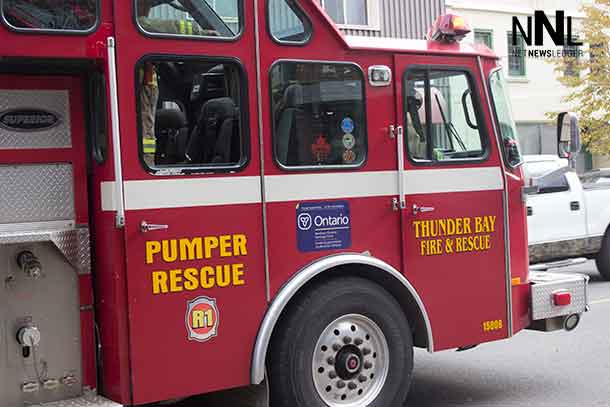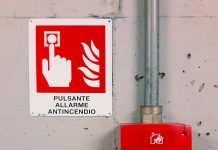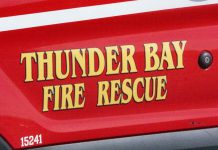
THUNDER BAY – A carbon monoxide alarm has been credited for alerting a Dryden family of a deadly CO leak in their home yesterday. Four people, including three children, required treatment in hospital after a CO alarm alerted the children’s mother that there was a problem in the residence.
Thunder Bay Fire Rescue reminds residents it is the law to install carbon monoxide alarms outside all sleeping areas if your home has a fuel-burning appliance, a fireplace or an attached garage.
“Thunder Bay Fire Rescue wants to make sure everyone is safe from CO and only a carbon monoxide alarm can alert you to its presence,” said Deputy Fire Chief Greg Hankkio.
The Ontario Fire Code was amended in 2014 to require CO alarms after the provincial government passed Bill 77 – the Hawkins Gignac Act. Bill 77 is named after OPP Constable Laurie Hawkins, who died, along with her husband and two children, in her Woodstock, ON, home from CO poisoning in 2008.
Thunder Bay Fire Rescue and Union Gas want to remind residents that it’s the law to have a working carbon monoxide alarm outside all sleeping areas of your home if your home has either a fireplace, a fuel burning appliance, or an attached garage. In condo and apartment buildings with a service room, CO alarms must be installed in the service room and adjacent to each sleeping area of all residences above, below and beside the service room. In condo or apartment buildings that have a parking garage, CO alarms must be installed adjacent to each sleeping area of all homes above, below and beside the garage.
What is CO?
- CO is known as the silent killer because it is an invisible, tasteless and odourless gas that can be deadly.
- CO is produced when fuels such as propane, gasoline, natural gas, heating oil or wood do not burn completely in fuel-burning appliances and devices such as furnaces, gas or wood fireplaces, hot water heaters, stoves, barbeques, portable fuel-burning heaters and generators and vehicles.
Prevent CO in your home:
- Ensure fuel-burning appliances in your home are inspected annually by a registered contractor.
- Check that all outside appliance vents are not blocked.
- Never use a portable fuel-burning appliance inside (i.e. barbeques, portable heaters and generators).
Know the symptoms of CO:
- Exposure to CO can cause flu-like symptoms such as headaches, nausea, dizziness, as well as confusion, drowsiness, loss of consciousness and death.
- If your CO alarm sounds, and you or other occupants suffer from symptoms of CO poisoning, get everyone out of the home immediately. Then call 9-1-1 or your local emergency services number from outside the building.
- If your CO alarm sounds and no one is suffering from symptoms of CO poisoning, check to see if the battery needs replacing, or the alarm has reached its “end-of-life” before calling 9-1-1.
Know the sound of your CO alarm:
- Your CO alarm sounds different than your smoke alarm. Test both alarms monthly and make sure everyone in your home knows the difference between the two alarm sounds.
- Don’t be confused by the sound of your CO alarm’s low-battery warning. Follow your CO alarm manufacturer’s instructions so you know the difference between the low-battery warning, the “end-of-life” warning, and the alarm alerting you to the presence of CO in your home.





